Archive for Writing systems
March 23, 2015 @ 7:36 am· Filed by Victor Mair under Grammar, Morphology, Writing systems
As I was preparing a recent post comparing Pekingese and Modern Standard Mandarin (MSM) sentences, I encountered an unusual (to me) expression that, at first, I didn't know how to interpret, namely "笑CRY". The two morphemes (pronounced "xiàoCRY", one Chinese and one English, mean "laugh" and "cry".
Read the rest of this entry »
Permalink
March 1, 2015 @ 11:41 am· Filed by Victor Mair under Alphabets, Language and advertising, Morphology, Phonetics and phonology, Semantics, Topolects, Writing systems
In China (and around the world among China watchers), everybody's talking about this ungainly syllable. "Duang" surfaced less than a week ago, but already it has been used millions and millions of times.
"The Word That Broke the Chinese Internet" (2/27/15) by Bethany Allen-Ebrahimian
"'Duang' is Everywhere on the Chinese Internets, Here’s What It Means" (2/27/15) by Charles Liu
"Chinese netizens just invented a new word, and it's going insanely viral" (2/28/15) by Ryan Kilpatrick (English text part of the way down the page)
Read the rest of this entry »
Permalink
February 7, 2015 @ 3:46 pm· Filed by Victor Mair under Writing systems
Most people seem to call it "homophonia" (25,000 ghits), but I'm not even sure what that means: "Homophonia" (7/31/14).
Following this cartoon in Magic Coffee Hair (8/16/12) and Gretchen McCulloch's article, "What's the Difference Between Homophonia, Homophobia, and Homophonophobia?" (8/1/14) in Lexicon Valley, I'll go with homophonophobia (4,310 ghits), despite the fact that it is a forbidding mouthful, as being a more accurate term for what I want to describe: an extreme, irrational fear of or aversion to words that sound alike. In this post, we will discuss homophonophobia, particularly as it relates to Japanese, but also touching upon Vietnamese, Korean, and Chinese manifestations of this type of anxiety disorder.
Read the rest of this entry »
Permalink
January 31, 2015 @ 10:46 pm· Filed by Victor Mair under Language and education, Language reform, Writing, Writing systems
[The following is a guest post by Dr. Ian Morgan of the Research School of Biology, Australian National University, Canberra, Australia and Zhongshan Ophthalmic Center, Sun Yat-sen University, Guangzhou, China. It is in response to "Chinese characters and eyesight" (11/12/14), which generated a lot of interest and discussion, and which references the work and views of Dr. Morgan.]
I came across your blog and the comments on the relationship between Chinese characters and myopia quite recently, and I thought it was worth a quick response.
Read the rest of this entry »
Permalink
January 20, 2015 @ 6:24 pm· Filed by Victor Mair under Language and computers, Topolects, Writing systems
Despite the efforts of the central government to clamp down on and diminish the role of Cantonese in education and in public life generally, the language has been experiencing a heady resurgence, especially in connection with the prolonged Umbrella Movement last fall.
"Cantonese resurgent" (12/11/12)
"Here’s why the name of Hong Kong’s 'Umbrella Movement' is so subversive" (10/23/14)
"Translating the Umbrella Revolution" (10/3/14)
"Cantonese protest slogans" (10/26/14), etc.
Read the rest of this entry »
Permalink
January 13, 2015 @ 11:27 pm· Filed by Victor Mair under Alphabets, Language and education, Language and religion, Writing systems
A government sponsored mural in Kashgar:
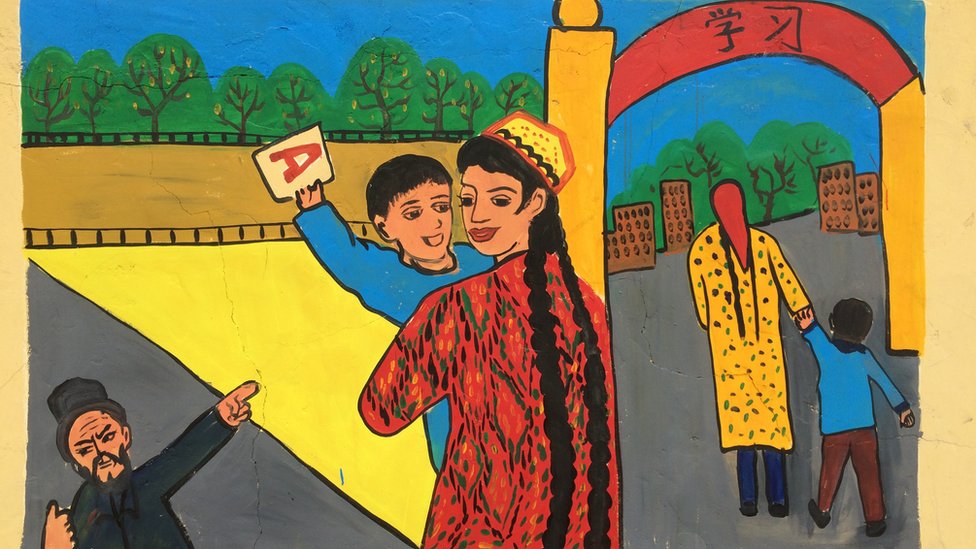
Read the rest of this entry »
Permalink
December 22, 2014 @ 9:52 pm· Filed by Victor Mair under Borrowing, Language and society, Transcription, Writing systems
Nathan Hopson found this poster hanging up all over student bulletin boards at Nagoya University in Japan:
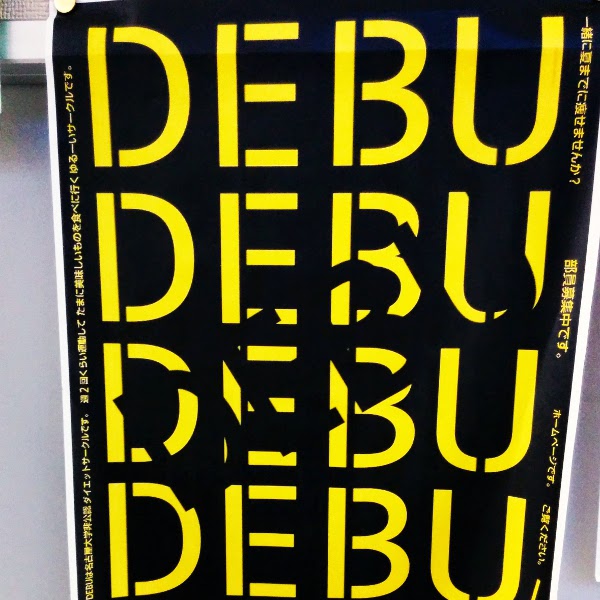
Read the rest of this entry »
Permalink
November 29, 2014 @ 10:35 pm· Filed by Victor Mair under Diglossia and digraphia, Language and politics, Writing systems
Just in case you hadn't seen this in the news, the winner of the Taipei mayoral election held on November 28, 2014 is Ko Wen-je (Kē Wénzhé 柯文哲), a trauma surgeon who ran as an independent.
"Pro-independence party candidate Ko Wen-je claims victory in Taipei mayor race"
The Straits Times (11/29/14)
Read the rest of this entry »
Permalink
November 12, 2014 @ 7:02 am· Filed by Victor Mair under Language and education, Language and medicine, Writing systems
There was an interesting article in the Economist a couple of day ago: "Why So Many Chinese Children Wear Glasses" (11/9/2014)
Myopia is epidemic in China, and the percentage of those with this affliction is increasing each year.
Read the rest of this entry »
Permalink
November 9, 2014 @ 10:38 pm· Filed by Victor Mair under Language and education, Transcription, Writing systems
The following diary entry by an elementary school student is making the rounds in the Chinese media and in the blogosphere:
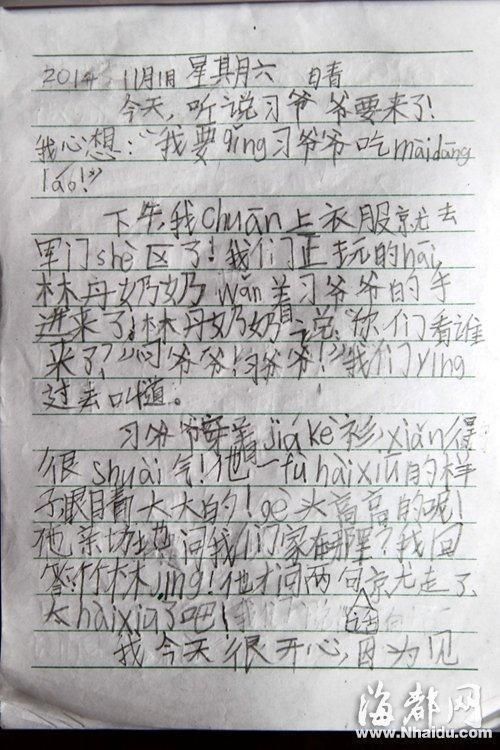
Read the rest of this entry »
Permalink
November 1, 2014 @ 11:15 pm· Filed by Victor Mair under Topolects, Translation, Writing systems
On December 15, 2012, Jakob Leimgruber sent in the following photograph of an unusual sign in Montreal:
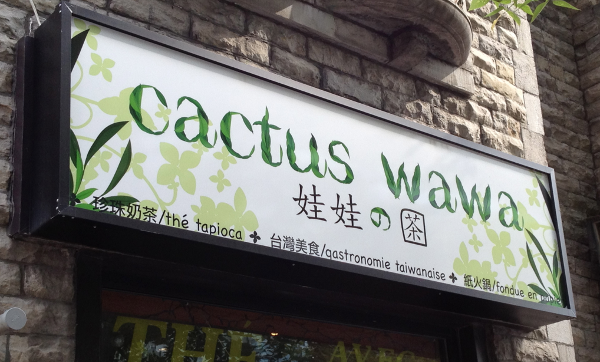
Read the rest of this entry »
Permalink
October 20, 2014 @ 5:17 pm· Filed by Victor Mair under Writing, Writing systems
[This is a guest post by David Moser]
Part I
I was giving a talk the other day, in Chinese, to Chinese students, about English pedagogy (go figure). I wanted to mention something about the difficulty of remembering how to write Chinese characters, and I chose to use an example of the idiom 韬光养晦 tao1guang1yang3hui4, "to hide your light under a bushel." Now the interesting thing about this example is that I had used it several times before as an example, in talks about the difficulty of Hanzi, and I said to the audience something like:
Read the rest of this entry »
Permalink
October 15, 2014 @ 11:17 am· Filed by Victor Mair under Language and advertising, Slang, Writing systems
When Tom Mazanec came home from Fudan University in Shanghai a few nights ago, he found this leaflet in a baggie hanging on his door:
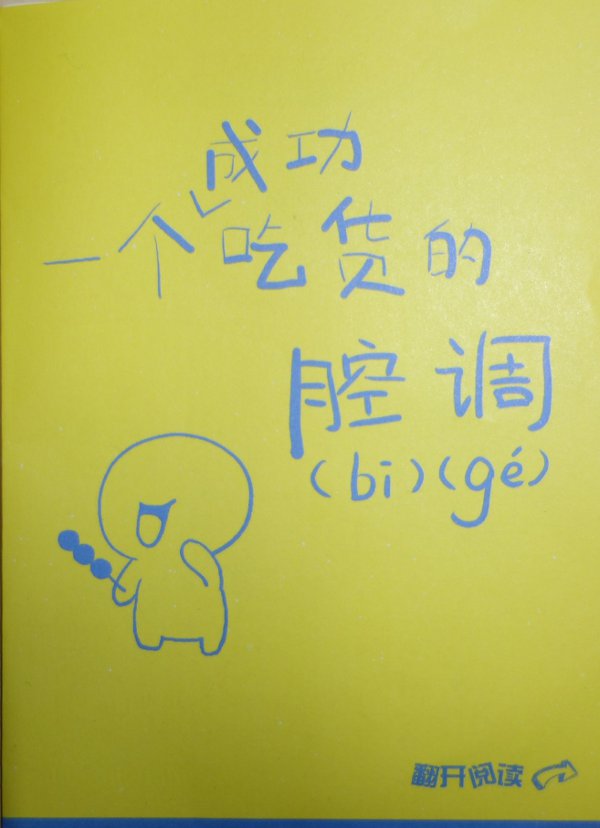
Read the rest of this entry »
Permalink




